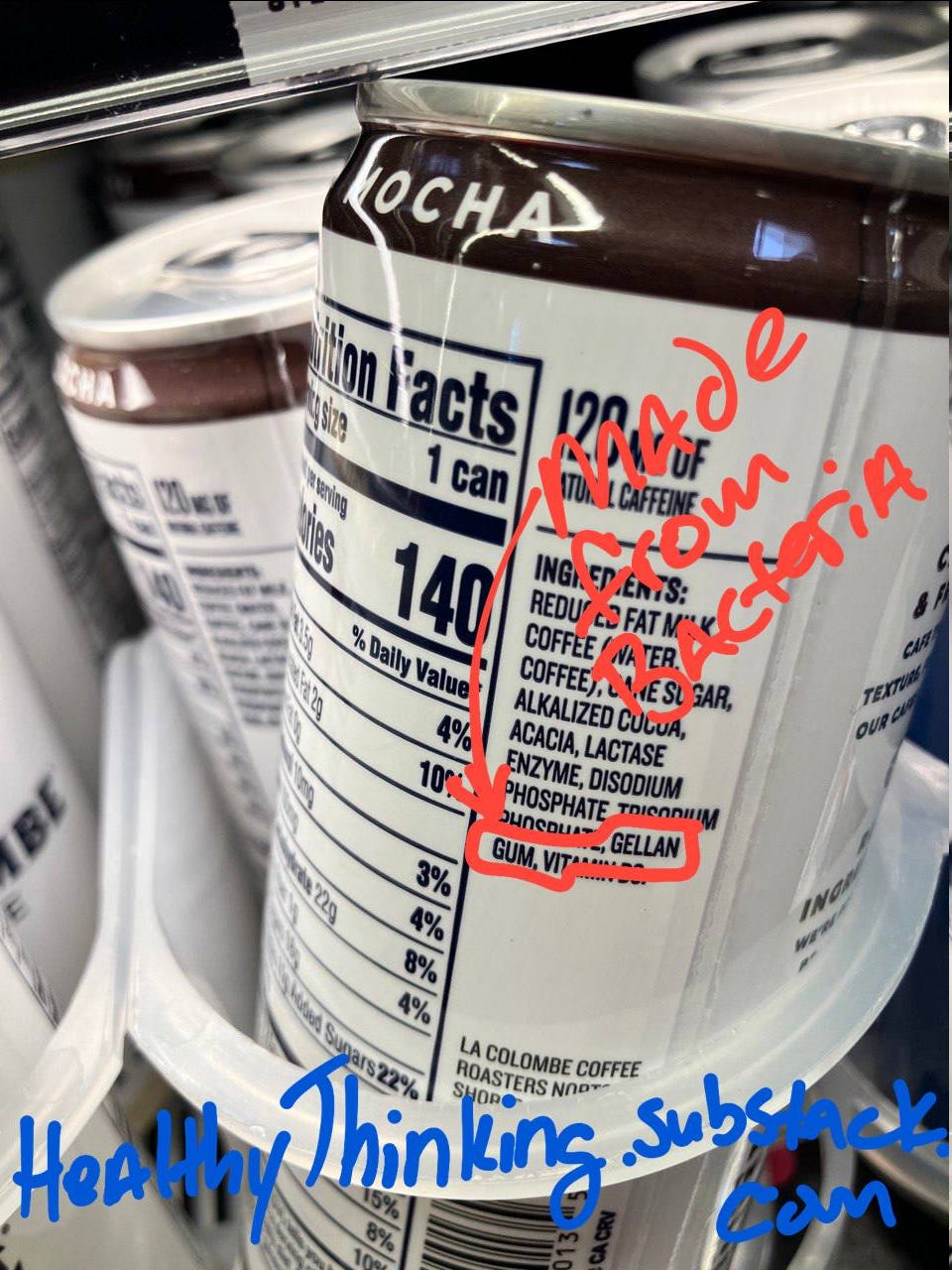IM4update (6) Short research survey on the food additive GELLAN GUM (GELLAN)
GELLAN GUM is increasingly present in a wide range of foods and drinks—should we avoid it?
Here is another Update to IM4 = Inflammation Mastery, 4th Edition (available from BookDepository, Amazon, Barnes and Noble, ThriftBooks, AbeBooks, BetterWorldBooks, WaterStonesBooks)
I am against unnecessary food additives in general and especially those that are either 1) unnatural chemicals—such as polysorbate 80, 2) known toxins—such as sulfites, pesticides, titanium, or 3) those which appear to have massive potential for adverse effects—such as carrageenan. As such, I’ve been suspicious and avoidant of food products that contain gellan gum because it is sourced from bacteria and would be likely (but not assured) to have pro-inflammatory properties. Here, I discuss my review of the actual data to either reinforce or refute my suspicions.
GELLAN GUM—sourced from bacteria—is increasingly present in a wide range of foods and drinks—should we avoid it?
Sourced from the bacterium Sphingomonas elodea, gellan gum is added to foods as a thickening agent, emulsifier, and homogenizing agent to maintain texture/consistency, avoid separation of fluids, and avoid precipitation of solids. Gellan gum is a linear anionic extracellular tetrasaccharide of two glucose, one glucuronate, and one rhamnose; as such, we would expect it to be undigestible by humans while possibly being fermentable by bacteria. Gellan gum is listed on food labels as E418 in the European food additive number system and will hereafter be named “gellan” for the sake of efficiency.
Amounts of gellan in food range from zero for people who avoid it up to dozens or hundreds of milligrams per day; the higher end (95th percentile) of intake in European toddlers is up to 72 mg/kg/d. For people who do not try to avoid it, food products containing gellan might be consumed for many years and several times each day.
Short survey of relevant research:
In the 1988 clinical trial by Anderson et al, “five female and five male volunteers consumed a weight of gellan gum corresponding to 175 mg/kg body weight for 7 days, followed by 200 mg gellan gum per kg body weight for a further 16 days” to find:




